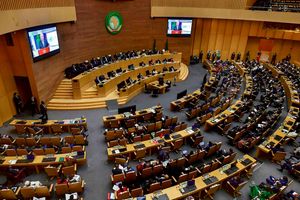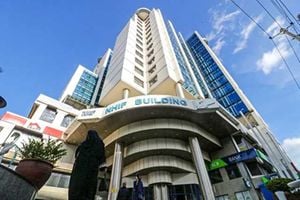
Times Tower, Kenya Revenue Authority headquarters in Nairobi.
Many county executive committee members, chief officers and directors of county departments are surprised to find out that the teams they lead are integral to own source revenue growth. After all, the conventional wisdom is that the key ingredients to revenue growth are the presence of an independent revenue board and a revenue system.
The conventional wisdom is, however, misleading. Here is why. Most county revenues are fees for services, have a major impact on public health and safety, and are directly impacted by economic activities, which themselves are influenced by the level and quality of county government services. Let us examine each of these three ideas briefly.
First, many county revenue streams are a fee for service. For instance, we get paid meat inspection fees because our meat inspectors inspect every carcass to ensure that meat is fit for human consumption.
That service attracts a tiny fee, usually no more than a couple of hundred shillings per carcass. If you then find that the meat inspection revenue line is reading zero, either there is revenue leakage, or worse, the service is not being provided.
If there is revenue leakage, the chief officer should be taking stern action against errant staff. Another often recommended step of resolving the problem at the roots is to go cashless. This removes the moral hazard involved in handling cash. And, instead of every chief officer organizing how her department is going cashless, this can be organised centrally, for example, by the county revenue board.
It is of course worse if there is no meat inspection. Citizens will get sick and could die. Such was the scare at Kimanju hospital in 2020, when 32 members of one clan showed up suffering severe vomiting after eating an un-inspected cow carcass. It turned out that the animal was under treatment just days before the incident. Fortunately, they all recovered. The meat inspection fees are the result of the county providing a crucial public health service – meat inspection. The service is not provided by the revenue board nor revenue collectors, and most definitely not the revenue system. Rather, it is provided by meat inspectors – staff of the livestock department!
Consider the sale of food to the public. All food handlers must have a public health certificate. Premises in which food is sold to the public must be hygienic. Obviously if food handlers are sickly, they will pass that sickness to you. When the premises are dirty or unhygienic, they contaminate the food sold therein. Unhygienic food is the source of many ailments such as diarrhea.
While Governor of Laikipia, I found out that treating diarrhea was costing us Sh72 million per year. Most interesting, we cut this number by half by increasing our public health and sanitation expenditure by 15 million shillings and focusing on the diarrhea hot spots in Nanyuki and Nyahururu. What did we do? Encourage better hygiene in food kiosks and among street food vendors, improve water supply and refuse collection, and, clean the streets and drainages.
Secondly, county services have a direct impact on public health and safety. Consider building plans. They are reviewed and approved to ensure that structures can support the human activities or the habitation proposed. You will have seen or heard about buildings collapsing often enough to know that this function is not working as well as it should in many parts of the republic. Building completion and occupation certificates are to ensure that the completed building is fit for human habitation. In a properly functioning system, the utilities, like water and electricity, would not be connected to buildings until such certification has been done.
Each of these services – review and approval of building plans, building inspection, fire inspection and so on, attracts a fee, not a tax. And, the services are vital to ensure safe buildings.
Thirdly, the demand for all county services, including the ones described above, responds directly to the health of the county economy. When it is doing poorly, the demand for services is low. And it is easy to see why. When citizens are having a tough time economically, the demand for meat, and therefore meat inspection services will be low. When the citizens are struggling financially, there will be less construction, so demand for building plan approvals will be less.
Yet economic activity is itself directly influenced by county services! Counties with high quality, streamlined services are more likely to attract investments. Today, Homa Bay is getting attention nationally and beyond. A recent investment conference attracted global interest. As business activity picks up, so do the fees from single business permits. With more revenue, the county government is able to do more, which results in even higher business activity. This virtuous cycle also works in reverse.
When Laikipia halted investments in the smart towns, the rapid growth in the business register slowed down, as fewer businesses were seeking licensing. The slow down meant less fees from the single business permits. With less money, refuse collection in the main commercial centers deteriorated as garbage trucks stayed parked for weeks without fuel, itself now more expensive from a weak shilling among other reasons.
Counties can of course take active measures to stimulate their economies, both individually or collectively. A well-documented case is the Laikipia Economic Stimulus program that leveraged commercial finance from leading banks to provide affordable credit to micro and small businesses. Broader but not so well known, is the effort by the Central Region Economic Block (CEREB) to remove double charges for single business permits for micro and small businesses that trade across county lines.
To get more fees from the citizens, you must give more, and better services.
@NdirituMuriithi is an economist









